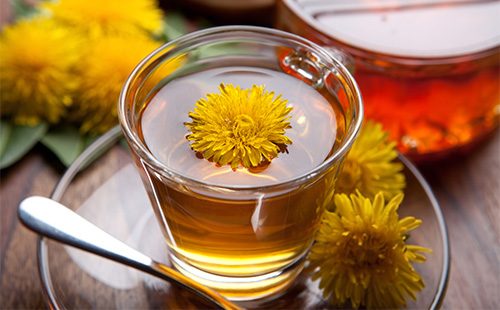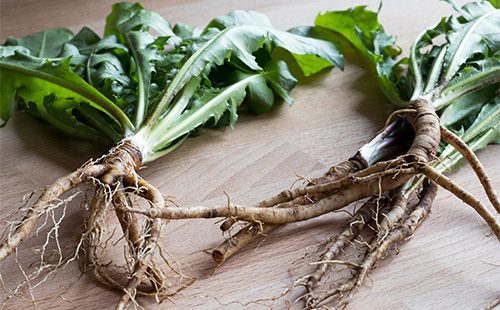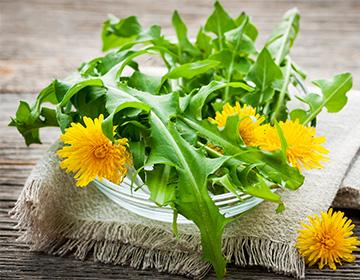The content of the article
The genus of Dandelions includes more than 1000 plants, of which about 200 grow in Russia. The most popular is ordinary, it is also medicinal, pharmacy or field. It's hard to find a place wherever this weed is encountered. Extremely tenacious, absolutely unpretentious, able to spread seeds over great distances, he became the cosmopolitan of the plant world, in which he has no competitors.
Botanical characteristic
Bright flowers, resembling the sun in appearance, have attracted human attention since ancient times. There is evidence that the use of dandelion was practiced in ancient Greece. Confirmation of this is the Latin name of the culture Taraxacum Officinale, from the Greek word tarasso, which in translation means "calm". It was as a sedative that the ancient Greek Aesculapius plant was used.
Description
In herbalists, it is not customary to even describe a plant. Everyone looks like a dandelion. A small herbaceous plant with large carved leaves, one or more flower arrows. The stems are round, pubescent, come out of the basal leaf outlet. They are crowned with yellow flower buds, which a month after the start of flowering turn into white fluffy hats.
They are composed of many "crests", each of which is attached to the seed. Seeds are weakly held on the receptacle and fly apart with the slightest wind blow. In a new place, the seed sprouts almost always, which explains the extreme prevalence of the culture. She is not afraid of the neighborhood with other plants, herbs. It grows everywhere, except in the far North and deserts.
Which of the children did not dabble in tearing a stalk with a fluffy flower to blow this white hat off! Often during such a game, sticky spots are found on the hands. This is the juice that is found in all parts of the plant. White, milk mass is bitter in taste.
Harvesting raw materials
The ground and underground parts of the plant are harvested at different times.
- Root. Harvested in late summer - autumn, when the grassy part begins to dry. During this period, the rhizome is rich in biologically active substances. Sometimes the collection is carried out in the spring, but if they are late, allowing the roots to sprout, they get poor-quality, loose, semi-empty raw materials.The rhizome is cleaned of soil, remove small roots, appendages, quickly washed with cold water. Cut into large pieces 10-15 cm long, left to stain in the sun until milky juice ceases to stand out. Then they are laid out in newspapers under the sun or a canopy (or better in the attic under a metal roof), so that the temperature reaches 40-50aboutC. Here, rhizomes are dried to brittleness. Well-dried raw materials are stored in cardboard boxes for five years.
- Grass. Harvested during the period of active vegetation, in June-July, when the stems and leaves are most developed. Cut off the entire terrestrial part of the plant, lay out under the sun or canopies on paper, fabric. After drying, they are folded into fabric bags and stored separately from rhizomes.
The juice is harvested from the grassy part of the plant. The most effective is that obtained from leaves that have reached maximum development. Their surface is with a reddish tint. Raw materials are processed immediately, for three hours. The resulting product is used in pure form or canned with alcohol 1: 1.
Composition
When considering the composition of a medicinal plant, it is customary to note the substances contained in its root. However, studies conducted by specialists of the Irkutsk State Technical University in 2014 showed an almost identical content of bioactive components in grass and root. In the scientific work “Biologically active substances of medicinal dandelion”, the authors S. Evstafiev and N. Tiguntseva note the advisability of a comprehensive examination of raw materials, without separation into types (rhizome, stem, flowers).
The beneficial properties of dandelion are determined by the content of substances of five groups.
- Carbohydrates. The plant is rich in water-soluble compounds of polysaccharides, pectins and inulin. Their pharmacological effect on the body is diverse. Plant carbohydrates stimulate the immune system, have anti-inflammatory and wound healing effects. Inulin is the most valuable polysaccharide of medicinal plants. He has the ability to selectively lower the level of glucose in the body. The substance only works if the sugar level is elevated, for example, with diabetes. If glucose is normal, it does not affect it. In addition, inulin lowers cholesterol, normalizes lipid metabolism, which is valuable for people seeking weight loss. The bioactive complex removes toxins and radionuclides from the body, prevents the occurrence of cancer.
- Phenolic compounds. Medicinal dandelion is rich in flavonoids: quercetin, luteolin, glucopyranoside. Substances possess capillary-strengthening, anti-inflammatory, anti-tumor effects. According to the content of flavonoids, the raw material falls out of the general rule of identity of the composition of different parts of the plant. In the roots there are three to four times more than in the leaves. But in the grassy part the content of methylated phenols is higher, in particular tocopherol, which has a pronounced antioxidant activity. The level of tocopherol in late August is four times higher than in early summer.
- Terpenes and terpenoids. They concentrate in inflorescences, but are also found in leaves and rhizomes. Represented by sesquiterpenes and their derivatives. Substances participate in lipid metabolism, regulate the breakdown of fats. In folk medicine they are called bitterness, they are used to stimulate appetite, improve digestion by stimulating the liver and pancreas.
- Sterols. The medicinal properties of the plant are also determined by the content of substances of the sterol group: acyclic carbohydrates and stigmasterol. These natural compounds have the ability to bind and remove cholesterol from the body, cleanse the blood of fat-soluble toxins.
- Mineral components and vitamins. The biological value of the phytogenics increases the content of magnesium, the volume of which reaches 1% in mass, as well as sodium, potassium, iron and phosphorus. Dandelion is included in the list of plants saturated with vitamin C - the concentration is 35 mg%. The content of vitamins A, PP, B and beta-carotenes has been established.
The healing properties of dandelion
The plant is widely used in folk medicine in Russia, Western and Eastern countries. Included in the monograph of the World Health Organization on commonly used herbal remedies in the CIS countries. The therapeutic possibilities of the culture are not fully understood, however, in terms of the number of studies on the pharmacological action of raw materials, dandelion is ahead of many plants.
Lines of action
Five types of effects of flower drugs on the body have been experimentally established.
- Anti-inflammatory, analgesic. In the experiment on rats, a pronounced analgesic effect and a decrease in edema with inflammation of the ear and paw were reliably noted. The effect is achieved without inhibitory effects on pathogenic microorganisms. Fresh juice and water extract stimulate wound healing, and tissue regeneration occurs without scabbing. You can use this property if the wound is fresh. If suppuration is outlined in it, dandelion preparations will not help.
- Antiulcer. The ability to heal a stomach ulcer has only an aqueous extract of the plant. The alcohol tincture in the experiment did not show such properties.
- Choleretic. This action is possessed by all dosage forms of herbal remedies. With intragastric administration to rats, an increase in bile production by 40% was observed.
- Diuretic. The diuretic effect of the culture and the ability to remove excess water from the body that are transformed into edema are noted. This property has been experimentally confirmed, but needs to be clarified. The fact is that no dosage form based on the roots of a plant has a diuretic effect. Only extracts from the grass part or from the whole culture show it.
- Hypoglycemic. It is also confirmed in experimental pharmacology. A 50% ethanol extract of whole dandelion caused a decrease in the concentration of glucose in the blood of rats and rabbits. But the decoction of the root did not have such an effect.
Cure for pain
Interestingly, in folk medicine, dandelion tea is considered an effective pain reliever, and juice from it is the best way to relieve pain during gastrointestinal spasm.
“When you use dandelion for the first time, you can’t even believe that this can happen,” says herbalist A. Varennikov. “A teaspoon is superior to No-Shpu in effectiveness, and in 15 minutes it relieves pain from hepatic and renal colic.” According to the phytotherapist, there is no better way to stop the blood and remove the pain during an injury.
The plant has a beneficial effect on the digestive system:
- relieves spasm of smooth muscles of the stomach, intestines;
- stimulates the discharge of gases;
- increases the production of digestive juice and bile.
Contraindications
Do not use drugs from a medicinal plant with:
- blockage of the biliary tract;
- bowel obstruction;
- acute inflammation of the gallbladder.
Pregnancy is not a contraindication, however, there are no data from clinical studies on the safety of the drug during this period. In experiments on rats and rabbits, water and ethanol extracts did not adversely affect the fetus upon intragastric administration.

Prescription Drugs
Herbal medicine is used to treat diseases of the gastrointestinal tract, with renal and hepatic colic, diabetes mellitus, gout. Indispensable medicines from dandelions in the treatment of joint and skin pathologies.
Infusion of grass and roots
Features. Tonic and restorative. It is used for vitamin deficiency, anemia, metabolic disorders. Recommended for atherosclerosis, gout, allergic reactions of an unclear cause. It normalizes the digestive tract and eliminates pain in gastritis, colitis, diseases of the pancreas, liver and kidneys. It is used for spasmodic abdominal pain.
How to make and use
- Grind the dried roots and grass.
- Take two tablespoons of raw material.
- Pour in 400 ml chilled boiled water.
- Leave to brew for 12 hours.
- Strain.
- Take 50 ml before meals four to six times a day.
Infusion of the root (herb)
Features. To normalize the digestive tract, use dried root or grass when fresh raw materials are not at hand. Grass is required twice as much as rhizomes. The tool eliminates spasm of smooth muscles, stimulates the passage of gases, suppresses colic and improves digestion.
How to make and use
- Pour a tablespoon of root (or two herbs) into a thermos.
- Pour boiling water with a volume of 500 ml.
- Cork, leave overnight.
- Over the next day, drink the resulting infusion in three divided doses.
Decoction of flowers
Features. The flowers of the plant have a mild sedative effect. Medicines from them are used for nervousness, insomnia, in the initial stage of hypertension due to stress.
How to make and use
- Pour 10 g of dried flowers into a container.
- Pour hot water with a volume of 200 ml.
- Bring to a boil, simmer over low heat for 15 minutes.
- Leave to infuse for 30 minutes.
- Strain.
- Take a tablespoon three times a day.
Decoction of grass and flowers
Features. It is used for chronic inflammatory diseases of the digestive tract to improve digestion and relieve pain.
How to make and use
- Mix 20 g of flowers and grass.
- Pour 400 ml of hot water.
- Boil for ten minutes.
- Leave to infuse for 30 minutes.
- Strain.
- Drink 50 ml four times a day after meals with pancreatitis, gastritis, inflammation of the liver and kidneys.
Canned juice
Features. Means for quick wound healing, which is important to have with you on a camping trip, in the country, in nature, especially if you are traveling with small children. After treatment, the wound does not inflame, heals quickly and without a trace. Tincture is also used to treat joints during an exacerbation of arthritis, arthrosis.
How to make and use
- Scroll through the meat grinder leaves.
- Squeeze the juice through a triple folded cheesecloth.
- Mix with alcohol with a strength of 40about in a ratio of 1: 1.
- Leave to brew in a dark place for a week.
- Drain from sediment.
- Apply to wounds and painful joints.
Fresh juice
Features. The composition is taken orally to restore the body after a stroke. Recommended for general weakness, anemia, jaundice, low immunity. It is used externally for the healing of fresh wounds and for cosmetic purposes.Dandelion juice is a proven folk remedy for age spots, freckles on the face, warts and corns.
How to make and use
- Rinse the fresh leaf under running water.
- Blanch for five minutes.
- Drain, dry the sheet.
- Pass through a meat grinder.
- Wring out the mass.
- Take 50 ml orally twice a day.
- Treat your skin externally in the morning and evening.

Ointment
Features. The treatment for burns and pressure sores. Stimulates tissue repair, improves regeneration and healing. Prepared on the basis of vegetable oil, but honey can be used instead. Honey-based ointment is a folk remedy for eczema.
How to make and use
- Grind the roots and grass into powder.
- Take a tablespoon of raw materials.
- Pour in vegetable oil or melted honey with a volume of 50 ml.
- Leave it for ten hours.
- Lubricate the affected area with the resulting composition twice a day.
A fresh leaf of a flower is eaten and added to salads. To remove the bitterness, the grass should be placed in salt water for 30 minutes, then chopped, seasoned with spices and vegetable oil. Fresh leaves have high nutritional value due to the content of carbohydrates, minerals and vitamins. But when soaked, bitterness is lost, so they do not have a healing effect on the digestive system.

